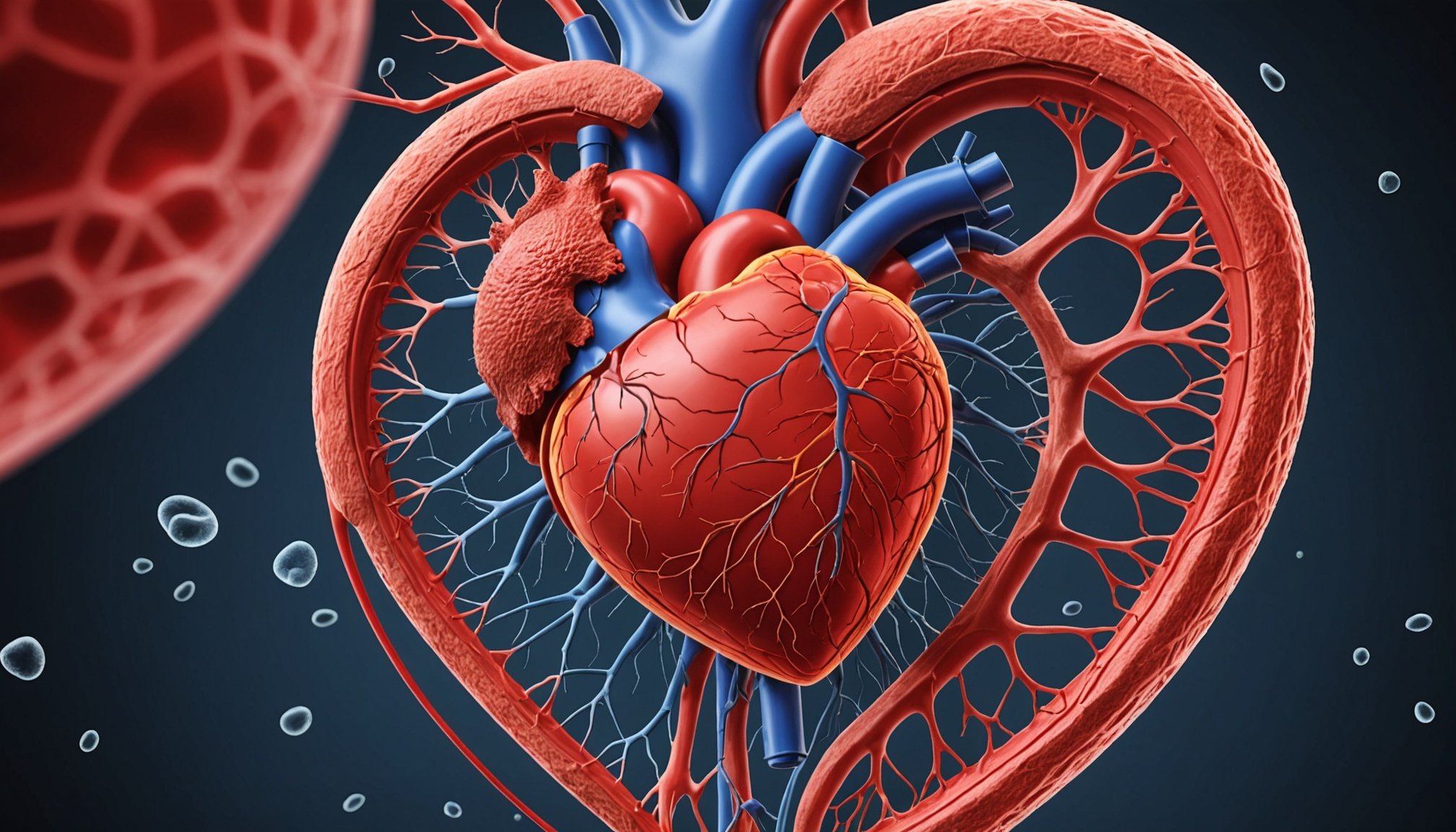Exploring Cutting-Edge Stem Cell Innovations for Heart Tissue Regeneration: The Future of Cardiac Repair
The Urgent Need for Innovative Cardiac Therapies
Cardiovascular disease remains the world’s leading cause of death, accounting for one-third of all deaths annually. Heart attacks, or myocardial infarctions, are a major contributor to this statistic, and the aftermath of such an event often leads to the formation of scar tissue in the heart. This scar tissue, while necessary for immediate structural integrity, significantly impairs the heart’s ability to pump blood efficiently, leading to heart failure in many patients. In fact, 50% of heart failure patients do not survive beyond five years after the initial heart attack.
Given the limited regenerative capacity of the heart, the need for innovative therapies that can enhance heart repair and prevent the onset of heart failure is urgent. Traditional treatments focus on managing symptoms and preventing further damage but do not actively promote healing. This is where cutting-edge stem cell innovations come into play.
This might interest you : Exploring the Mental Benefits of Progressive Muscle Relaxation for Individuals Living with Chronic Pain
Stem Cell Therapies: A Promising Approach
Stem cell therapies have emerged as a promising strategy for cardiac repair. These therapies leverage the potential of various types of stem cells to regenerate damaged heart tissue.
Types of Stem Cells Used in Cardiac Repair
- Embryonic Stem Cells (ESCs): These cells have the ability to differentiate into any cell type, including cardiomyocytes. However, their use is limited by ethical concerns and the risk of tumorigenesis.
- Induced Pluripotent Stem Cells (iPSCs): These cells are derived from adult cells and reprogrammed to have the ability to differentiate into various cell types. They offer a patient-specific approach but face challenges related to differentiation, integration, and survival.
- Mesenchymal Stem Cells (MSCs): These cells are known for their anti-inflammatory properties and ability to secrete growth factors that aid in tissue repair. They are often harvested from bone marrow or adipose tissue.
- CD34+ Stem Cells: These cells are mobilized from the bone marrow to the peripheral blood after a heart attack and play a crucial role in promoting angiogenesis and revascularization of the damaged tissue.
Mechanisms of Action in Stem Cell Therapies
Stem cell therapies work through several mechanisms to promote cardiac repair:
Additional reading : Unlocking the Secrets of Peptide Therapy: The Most Recent Advances in Wound Healing Research
- Paracrine Effects: Stem cells release growth factors and anti-inflammatory signals that aid in tissue recovery. For example, CD34+ cells release paracrine factors that induce angiogenesis and revascularization of the damaged tissue.
- Cell Differentiation: Stem cells can differentiate into various cell types, including cardiomyocytes, endothelial cells, and fibroblasts, which contribute to the repair of the heart tissue.
- Immunomodulation: Certain stem cells, such as human amniotic epithelial stem cells (hAESCs), have immunomodulatory activities that help in creating a beneficial microenvironment for cardiac repair.
Tissue Engineering and Scaffold Technologies
Tissue engineering plays a critical role in enhancing the efficacy of stem cell therapies. Advanced biomaterials and scaffold technologies are being developed to support cell survival and integration.
Key Developments in Tissue Engineering
- Porous Antioxidant Polyurethane (PUR) Scaffolds: These scaffolds have been shown to provide a beneficial microenvironment for cardiac repair by facilitating a desirable immune response and promoting angiogenesis. When combined with hAESCs, these scaffolds significantly reduced fibrosis and improved cardiac remodeling and function in animal models.
- Cardiac Patches: Engineered tissues using iPSCs or other stem cells can be implanted to promote heart regeneration while providing structural support. These patches can be designed to mimic the natural heart tissue, enhancing cell retention and integration.
Experimental Therapies: A New Frontier
In addition to stem cell therapies, other experimental approaches are being explored to enhance cardiac repair.
Monoclonal Antibody Therapy
Researchers at UCLA have developed an experimental therapeutic monoclonal antibody therapy that targets the protein ENPP1, which increases inflammation and scar tissue formation after a heart attack. This therapy has shown promising results in preclinical studies, reducing scar tissue formation and improving cardiac function in mice. A single dose of the antibody significantly enhanced heart repair, with only 5% of treated animals developing severe heart failure compared to 52% in the control group.
Challenges and Future Directions
Despite the promising potential of these therapies, several challenges need to be addressed:
Delivery and Retention
One of the critical challenges is the efficient and targeted delivery of therapeutic agents to the heart. Unlike localized tumors, cardiovascular diseases affect large, moving organs, making it difficult to ensure cell retention in the damaged heart tissue. Direct intramyocardial injections using minimally invasive techniques are being explored to improve delivery efficiency.
Safety and Efficacy
Ensuring the safety and efficacy of these therapies is paramount. Long-term effects, such as potential adverse effects on bone mass or bone calcification, need to be thoroughly investigated. Early-phase clinical trials have shown the safety and efficacy of using stem cells for cardiac repair, but more extensive studies are required.
Scalability and Cost
Advancements in automation and biomanufacturing are crucial for scaling these therapies while improving consistency and reducing costs. The development of off-the-shelf allogeneic therapies, where cells are sourced from healthy donors, could make these treatments more accessible and scalable.
Clinical Trials and Market Potential
Several stem cell therapies are moving into clinical trials, marking a significant step towards their potential market approval.
Ongoing Clinical Trials
- UCLA’s Monoclonal Antibody Therapy: The team is preparing to submit an Investigational New Drug (IND) application to the U.S. Food and Drug Administration, with plans to begin first-in-human studies in early 2025.
- Stem Cell-Based Therapies: Early-phase clinical trials have shown promising results, and ongoing studies are focusing on optimizing delivery methods and ensuring long-term safety and efficacy.
Practical Insights and Actionable Advice
For those interested in the potential of these therapies, here are some practical insights:
- Stay Informed: Follow reputable sources such as Google Scholar and preprints.org to stay updated on the latest research and clinical trial results.
- Support Research: Encourage and support ongoing research in regenerative medicine through donations or participation in clinical trials.
- Consult Healthcare Professionals: If you or a loved one is considering these therapies, consult with healthcare professionals to understand the current state of the treatments and potential risks and benefits.
The future of cardiac repair is promising, with cutting-edge stem cell innovations and tissue engineering technologies offering new hope for patients with heart disease. While challenges remain, the potential for these therapies to revolutionize the treatment of cardiovascular diseases is significant.
As Dr. Arjun Deb, a professor of medicine and molecular, cell and developmental biology at UCLA, noted, “The mechanisms of tissue repair are broadly conserved across organs, so we are examining how this therapeutic might help in other instances of tissue injury. Based on its effect on heart repair, this could represent a new class of tissue repair-enhancing drugs.”
With continued advancements in stem cell biology, gene editing, and delivery technologies, we are on the cusp of a transformative era in cardiac care.
Detailed Bullet Point List: Mechanisms of Action in Stem Cell Therapies
- Paracrine Effects:
- Release of growth factors and anti-inflammatory signals.
- Induction of angiogenesis and revascularization.
- Modulation of the immune system to create a beneficial microenvironment.
- Cell Differentiation:
- Differentiation into cardiomyocytes, endothelial cells, and fibroblasts.
- Contribution to the repair of heart tissue by replacing damaged cells.
- Immunomodulation:
- Reduction of proinflammatory responses.
- Increase in anti-inflammatory signals.
- Promotion of a desirable immune response for cardiac repair.
- Cell Survival and Integration:
- Use of scaffolds and biomaterials to support cell survival.
- Enhancement of cell retention in the damaged heart tissue.
Comprehensive Table: Comparison of Different Stem Cell Types
| Type of Stem Cells | Source | Differentiation Potential | Mechanism of Action | Challenges |
|---|---|---|---|---|
| Embryonic Stem Cells (ESCs) | Embryos | Can differentiate into any cell type | Replace damaged cells, promote tissue repair | Ethical concerns, tumorigenesis risk |
| Induced Pluripotent Stem Cells (iPSCs) | Adult cells | Can differentiate into various cell types | Patient-specific approach, promote tissue repair | Differentiation, integration, and survival challenges |
| Mesenchymal Stem Cells (MSCs) | Bone marrow, adipose tissue | Differentiate into connective tissue cells | Anti-inflammatory effects, secretion of growth factors | Limited differentiation potential |
| CD34+ Stem Cells | Bone marrow | Differentiate into endothelial cells | Promote angiogenesis, revascularization | Limited availability, short-term effects |
| Human Amniotic Epithelial Stem Cells (hAESCs) | Amniotic epithelium | Immunomodulatory activities | Modulate immune response, promote angiogenesis | Biosafety concerns, long-term effects unknown |
This table provides a comprehensive comparison of different stem cell types, highlighting their sources, differentiation potentials, mechanisms of action, and the challenges associated with their use in cardiac repair.











